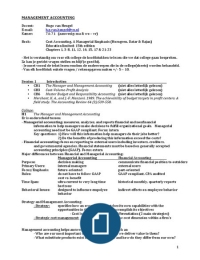Summary
Summary Management Accounting Premaster Business Administration - Financial Management VU
Course
Management Accounting
Summary of Pre-Master (BA - Financial Management) Box Management Accounting. Partly in English and partly in Dutch. Incl. all subjects matter and literature / papers.
[Show more]
Preview 4 out of 44 pages
Uploaded on
March 3, 2016
Number of pages
44
Written in
2014/2015
Type
Summary
Institution
Vrije Universiteit Amsterdam (VU)
Education
Business Administration
Course
Management Accounting
All documents for this subject (1)
MANAGEMENT




